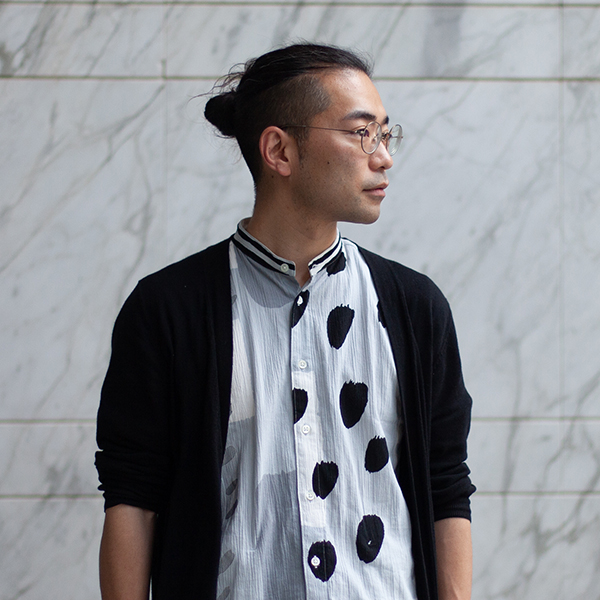Born in Fukuoka in 1986, Arai is based in Shiga.
In 2009 he graduated from Waseda University with a major in expressive arts and in 2011 he completed a master’s degree in art studies at Tama Art University. Before assuming his current position in 2015, he served as an assistant in the Department of Art Studies at Tama Art University (2011–2015).
While working closely with artists, Arai's curatorial practice centers on the effect that the relationship between the works and the space has on the appreciation experience.
Stories of Collaboration
Arai Yasuhiro: Delivering experiences
Arai Yasuhiro, Curator, Shiga Museum of Art
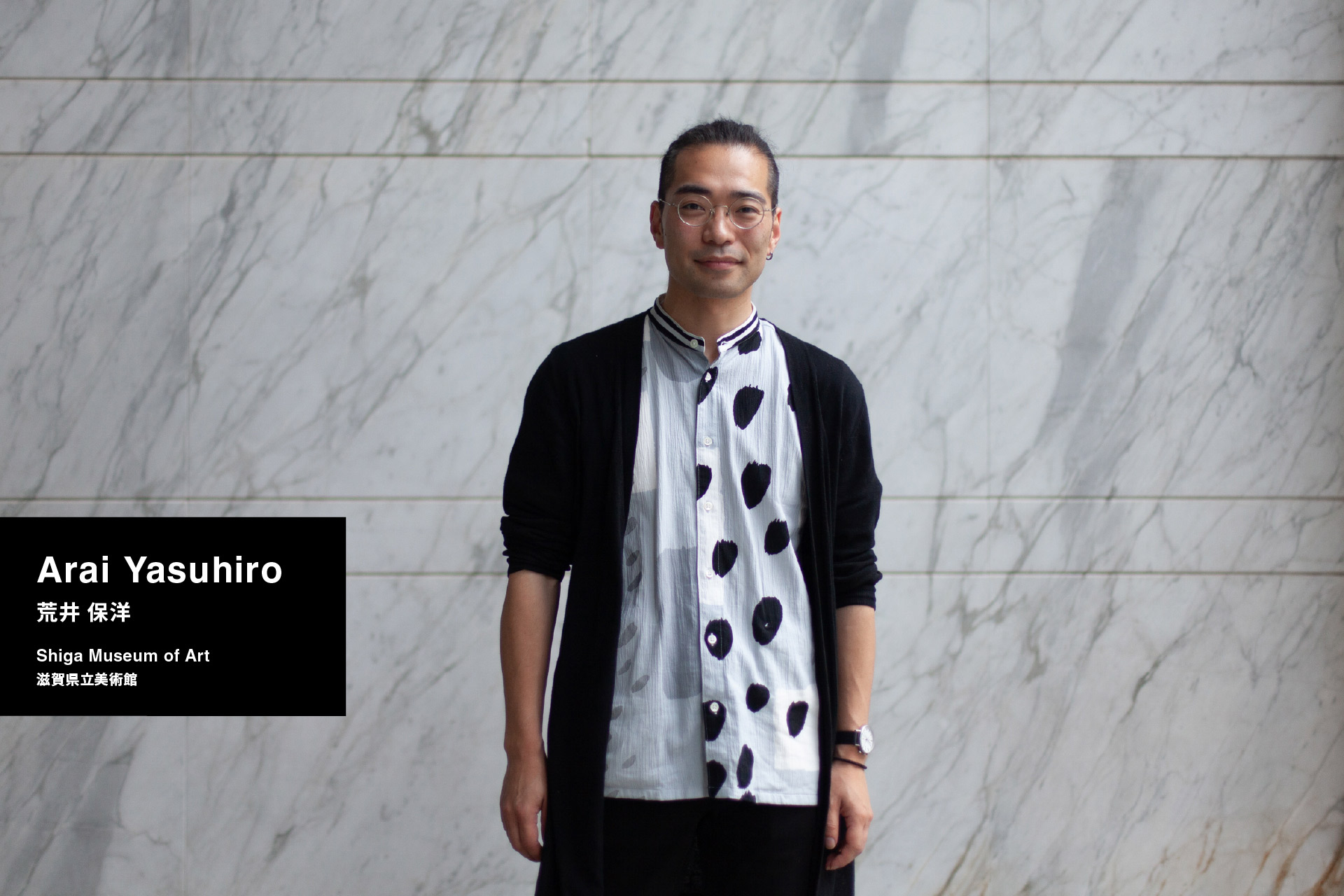 2025.10.07
2025.10.07
The term “curator” generally refers to someone who plans and curates exhibitions at museums and art galleries. But Arai Yasuhiro, curator at the Shiga Museum of Art, has followed a somewhat unusual career path. A few years after he started to work as a curator, the Museum of Modern Art, Shiga (now the Shiga Museum of Art) embarked on a complete renovation. Prompted by this, Arai decided to mount exhibitions in community spaces. This exhibition series, called the Shiga Kinbi Art Spot Project, made use of traditional buildings and vacant houses. By making the exhibition an extension of everyday life, it attracted people who are ordinarily unfamiliar with contemporary art and it became a major topic of conversation.
Under the JUMP program, Arai is working with artist Endo Kaori to present an exhibition at the Art Gallery of New South Wales in Sydney, Australia. We asked him about the exhibition, and also about how he got started as a curator, including how his unusual career path informs his practice as a curator.
Interview and writing by: Hagiwara Yuta; Photos by: Nakata Emi; Edited by: Kawamura Yoko
Curator in a local government office
Many curators grew up in environments where they were able to enjoy art from childhood. Were you exposed to art at a young age?
Arai: Arai: I liked to draw, but I rarely went to art museums. I went to a general university and studied in the School of Literature. For one class, I was assigned to visit the Museum of Contemporary Art Tokyo to write a report on an exhibition. That was the first time I saw a permanent exhibition at an art museum.
Until then, I wasn't in the habit of looking at contemporary art, and I thought that only paintings and sculptures were art. But when I first visited the contemporary art museum, I was surprised by the world that I found there. I was particularly overwhelmed by a piece titled Reflection by Korean artist Do Ho Suh. He used fabric to create architecture within the space. It engaged all of my senses in an interesting, eye-opening experience that made me marvel at what could be done with a space. After that, I became interested in contemporary art, so I went on to graduate school at Tama Art University (“Tamabi”).
What sorts of activities were you involved in when you were in graduate school?
Arai: In 2010, under curator Hasegawa Yuko, who was a Tamabi professor, I had a long internship working on the Transformation exhibition at the Museum of Contemporary Art Tokyo. This was the first time that I was involved in an exhibition. The days leading up to the exhibition were extremely hectic, and I remember feeling like it was just like the night before a school festival.
Perhaps because this was my formative experience, my main focus as a curator is on creating exhibitions. Some curators research artists and works of art and then create an exhibition as a means of presenting their findings, but what interests me is the kind of experience that I can deliver when artworks are displayed in a space to become an exhibition.
ko, who was a Tamabi professor, I had a long internship working on the Transformation exhibition at the Museum of Contemporary Art Tokyo. This was the first time that I was involved in an exhibition. The days leading up to the exhibition were extremely hectic, and I remember feeling like it was just like the night before a school festival.
Perhaps because this was my formative experience, my main focus as a curator is on creating exhibitions. Some curators research artists and works of art and then create an exhibition as a means of presenting their findings, but what interests me is the kind of experience that I can deliver when artworks are displayed in a space to become an exhibition.
After that, what path took you to your current role at Shiga Museum of Art?
Arai: After finishing graduate school, I worked as an assistant at my alma mater, Tamabi, for a seminar on creating contemporary art exhibitions, where I had the experience of working with a variety of artists to create exhibitions. At the time, the Museum of Modern Art, Shiga (now the Shiga Museum of Art) was recruiting, so I applied for a position. The museum was embarking on a project to renovate an existing building and construct a new building, and I was intrigued by the work of creating a new museum from square one.
So how did you go about creating this new museum?
Arai: For the first six months I worked at the prefectural government offices rather than at the museum. This was because I was both a curator for the museum and a curator in the government office that was responsible for the new building. I remember when I was hired, my first task was to create materials to respond to questions posed by prefectural assembly members. At the time, I wore a suit and worked on the documents side by side with government administrative staff. I didn't come into contact with any artworks at all. If I had already worked as a curator at another art museum, I might have wondered whether this was really a curator's job. But I didn't know my right from my left, so it didn't bother me.
Do you think that what you learned about government thanks to that experience is one of your strengths?
Arai: Of course. Thanks to my experience in government, I understand things like who to talk to in order to move a project ahead, and I can also predict how prefectural assemblymembers might react. This is useful now that I’m working in an art museum.
Many curators are motivated by the sense of meaning and value they get from sharing and discovering new cultures. But government moves by a different sort of logic than the logic of culture and art. When a curator has a project that they want to make happen, they sometimes have to play a card other than “cultural significance.” I developed this realistic way of thinking through working in local government.
Setbacks and new challenges in creating the new museum
In 2018, the plan for the new museum building changed direction, with the prefecture deciding to focus on renovating the existing facility. How did you feel when the project was redirected?
Arai: I was bewildered and disappointed by the sudden change of course. But I had a huge backlog of work in front of me, so I didn't have the leeway to feel the shock.
After the plan for the museum changed, you worked on the Shiga Kinbi Art Spot Project (“Art Spot”) from 2018 to 2021. How did this come about?
Arai: At the time, the museum had already been closed for a long time in preparation for construction work. Among various initiatives during the closure, the museum tried exhibiting pieces from its collection at other art museums and universities in the prefecture. While this was an opportunity for people who had never visited a museum before to experience the collection, it also meant that various requirements for showing the works had to be met, and this was often hard. It also seemed to me that exhibitions at these sorts of venues would only be seen by people who made an effort to visit. Instead of asking people to come to the exhibitions, I wanted to create a project in which the museum would go out into the community, allowing it to engage in communication with the people who live there.
So instead of having people come to see the art, the art gets closer to them?
Arai: Another thing that I was pondering was collaboration with local artists. At the time, the museum had almost no communication with the young artists of the region. So together with young artists with ties to Shiga, Art Spot put on group exhibitions focusing on new works at venues in three areas of the prefecture that are a distance from the museum: Nagahama, Takashima, and Higashiomi.
None of the venues that Art Spot used had mains electricity. As a result, setting up the exhibition always began with arranging for electrical work to connect the power. Since there were no blueprints for the buildings, I also had to measure and draw up the plans myself.
The opening day of Vol. 2 in 2019 made an impression on me. The venue was located in the mountains of Azumigawa-cho, Takashima City, and on the morning of opening day I received a call from a staff member saying, “There's a troop of monkeys blocking the parking lot”! Of course, at this kind of venue it’s impossible to control the temperature or humidity, and security is minimal. There’s no denying the possibility that the artwork could deteriorate or become damaged. These kinds of conditions would be unthinkable for an exhibition in a regular art museum, but the artists were intrigued by the venue and helped us create the exhibition.

Shiga Kinbi Art Spot Project Vol. 2, Symbiosis
Photo: Mugyuda Hyogo

Inoue Yui, having roots, 2018 (Shiga Kinbi Art Spot Project Vol. 2, Symbiosis)
Photo: Mugyuda Hyogo
How did visitors react to this one-of-a-kind exhibition?
Arai: We received more direct responses than we would have received at an exhibition at a museum, and this was remarkable. I had the experience of talking to all sorts of people and seeing their reactions for myself. There was the neighborhood woman who stopped by on her daily dog walk...the time that I stooped down to explain the artwork to an elderly woman with a hunched back...and the time that I spent two hours listening to local tales from a grizzled old man who wandered by.
After that the museum reopened as the Shiga Museum of Art, and you worked on the museum's inaugural exhibition, Soft Territory – Lights of Connection (2021). You also organized the exhibition of the work of photographer Kawauchi Rinko which was titled Rinko Kawauchi M/E On this sphere Endlessly interlinking (2023), which was shown at the Tokyo Opera City Art Gallery and the Shiga Museum of Art.
Arai: The Kawauchi exhibition was the first major solo exhibition for a living artist that I organized. It was a significant experience in my career. I asked architect Nakayama Hideyuki to design the space. Kawauchi had visited Iceland, and inspired by the volcanoes that she photographed there, she wanted to create a space that felt physically closed, like a mother's womb. Kawauchi and the curatorial team had come up with ideas for shapes like tunnels and snow huts, and when they discussed this with Nakayama, he brought up the idea of using translucent fabric. A structure made from translucent fabric folded into pleats was cut out to form a tunnel, thus creating a space just as Kawauchi had imagined: closed but not completely cut off from the outside world.
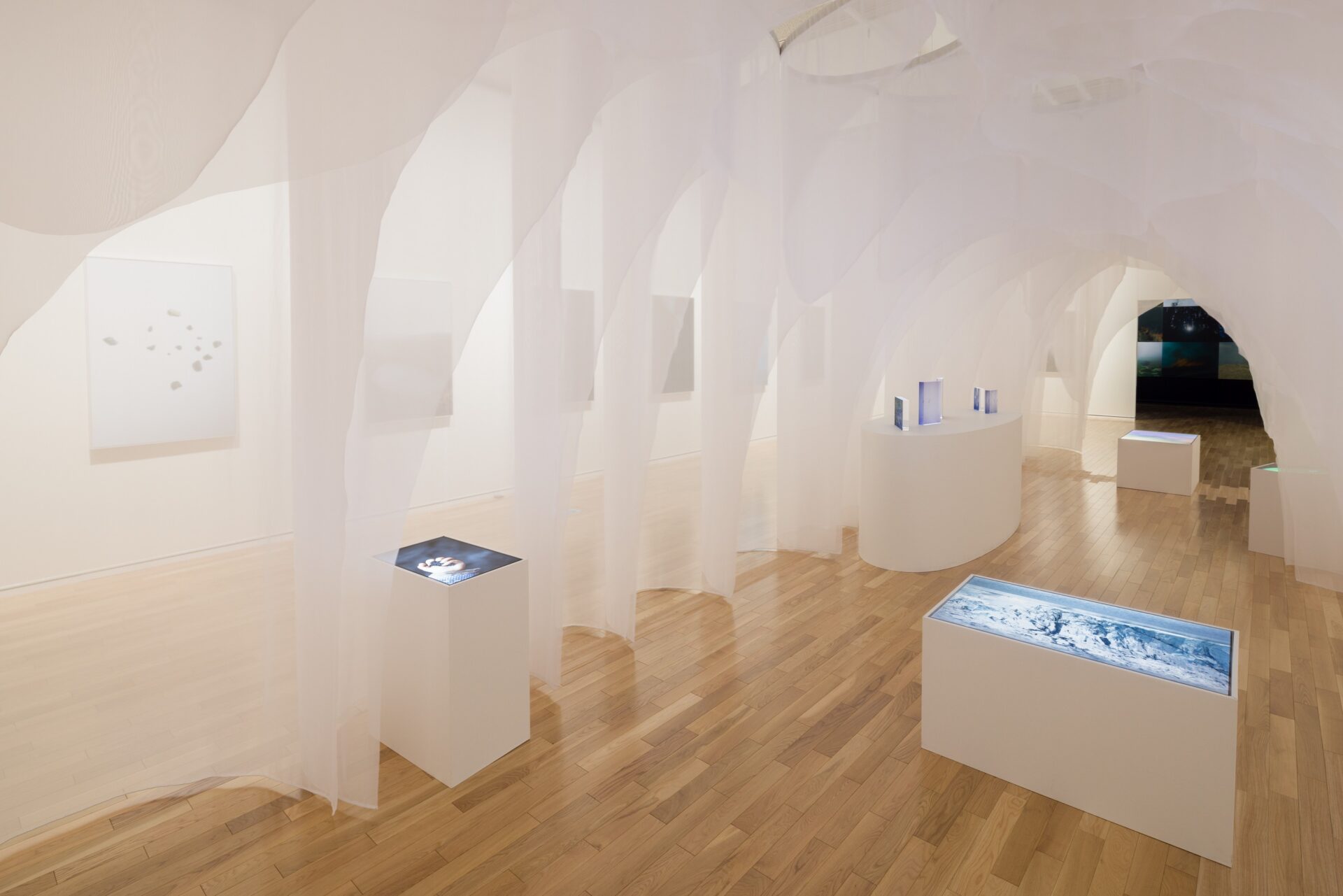
Rinko Kawauchi M/E On this sphere Endlessly interlinking
Photo: Mugyuda Hyogo
How is mounting an exhibition in a venue other than a museum, as you did with Art Spot, different from putting on an exhibition in a museum, like the Rinko Kawauchi exhibition?
Arai: Putting on an exhibition in a rough environment—like we did with Art Spot—provides a lot of freedom, but the works must not be too refined or they’ll be overwhelmed by the space. On the other hand, a museum is a place with spaces made just for exhibiting artworks. This means it’s a place where we can home in on what it is that we want to do: How do we want to show the works? What do we want the visitors to experience? This is a major difference.
Creating exhibitions in Australia
Under the JUMP program, you are curating an exhibition of Endo Kaori's work at the Art Gallery of New South Wales in Sydney. Could you talk about why you applied to join the program?
Arai: After reading the application guidelines, I decided to apply because the program's emphasis on the process of creating exhibitions together with artists was appealing to me. Also, the reality is that given the size of public museum budgets, it’s fairly difficult to work with museums overseas. I decided to apply because I thought that if I could gain experience in working with an art museum overseas, I might be able to broaden the scope of my work.
Once I was chosen as a curator and it was decided that I would be collaborating with the Art Gallery of New South Wales, I thought about which artist to invite for the exhibition. I picked Endo because she’s an artist who got her start in crafts, and she’s able to create works based on culture that revolves around everyday life. I thought that her work would more readily connect with people outside of Japan.
I went to the site for the first time in April 2025 to conduct research, along with Endo. The Art Gallery of New South Wales is an enormous museum. In terms of floor space, it’s bigger than the Museum of Contemporary Art Tokyo and the National Museum of Modern Art, Tokyo combined. We toured every inch of the museum to consider what kind of exhibition would be possible. We also went to see the 11th Asia Pacific Triennial of Contemporary Art, in Brisbane, and we looked at a lot of Aboriginal art.
Is your exhibition going to be influenced in some way by Aboriginal art?
Arai: For now, I don't think that it will have an Aboriginal theme or direct influence. However, as the exhibition is being held in Australia, an awareness of First Nations culture is essential for understanding the local context.
Australia is reflecting on its history of persecuting its Indigenous peoples and seeking to reconsider it. We too must keep this history in mind as we conduct research in this country and create and show works there. It can’t be simply disregarded.
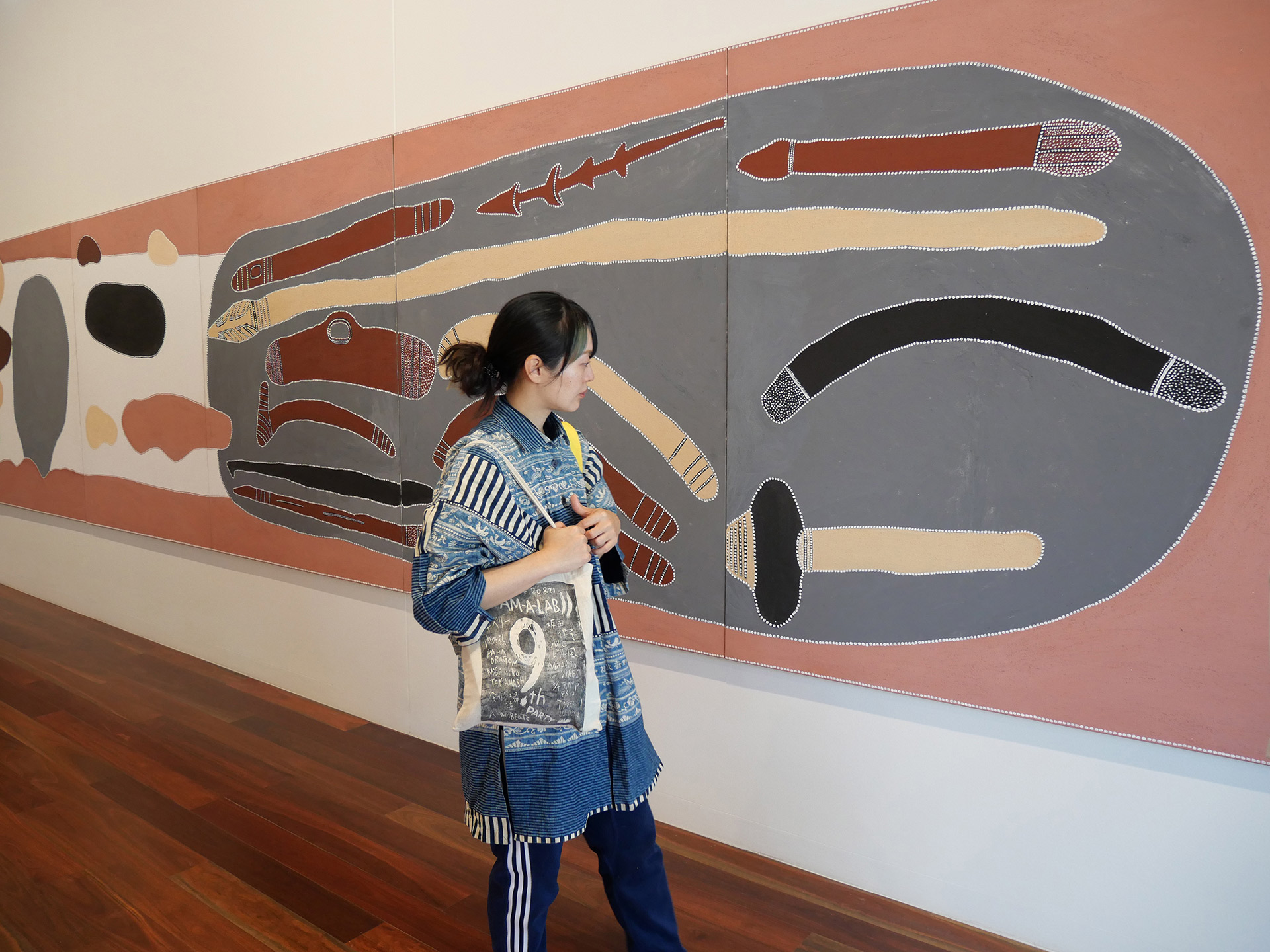
Installation view of Rusty Peters Waterbrain 2002, Art Gallery of New South Wales
©︎Estate of Rusty Peters, Warmun Art Centre/Copyright Agency
Incorporating the entire process
The exhibition is scheduled for 2026. At this point, what do you think the works will look like?
Arai: Endo presented a work titled sheep and sleep at the Aichi Triennale 2022. Her installation was inspired by the fact that Ichinomiya City in Aichi Prefecture was once the largest producer of woolen textiles in Japan. To make the textiles, Endo handled the entire process of dismembering a sheep, tanning its hide, and spinning and weaving its wool. Given that Australia is the world's second largest producer of wool, after China, sheep may appear in her work in Sydney, as well.
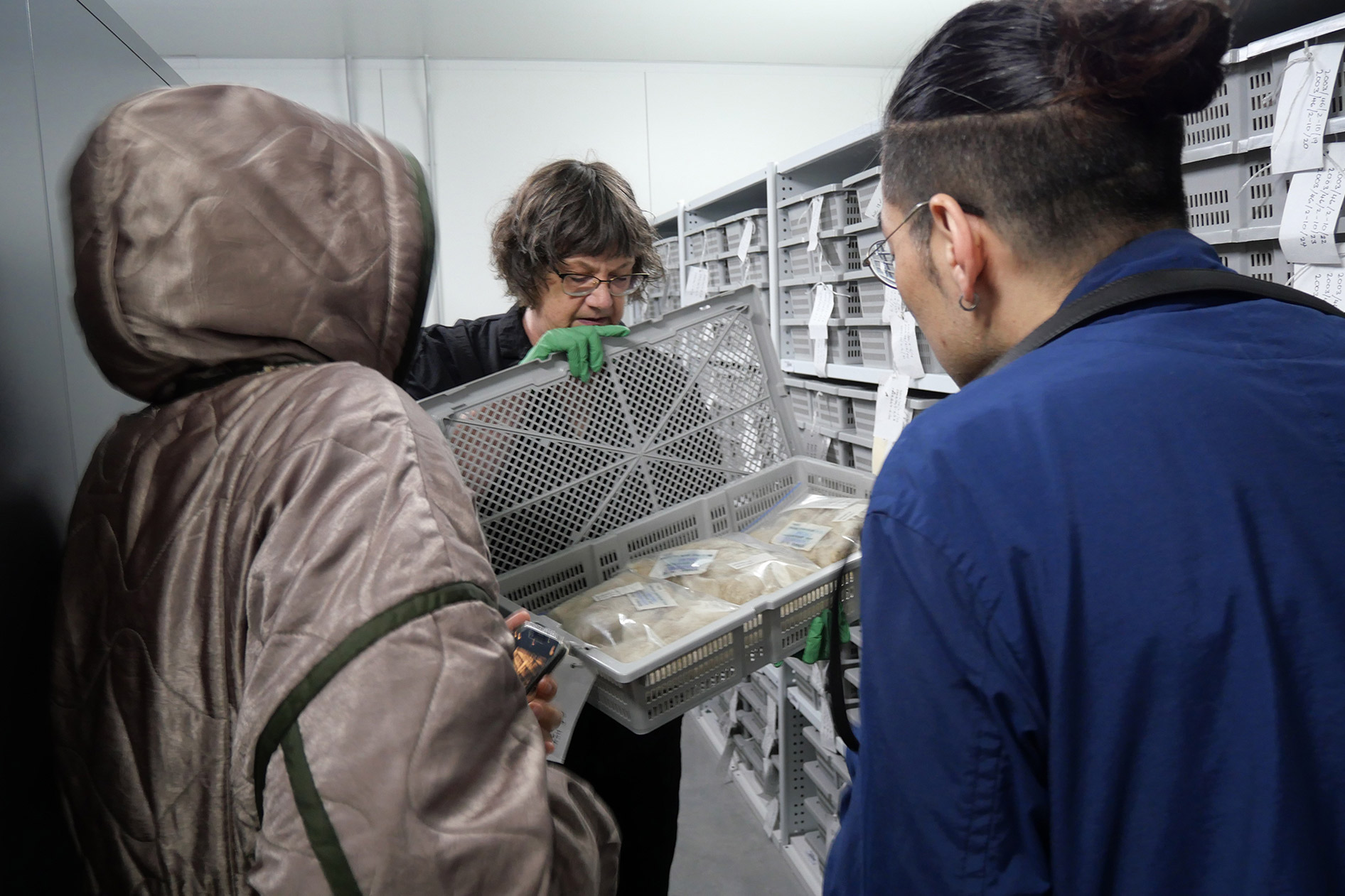
With Permission from Powerhouse Museum
Photo: Handa Juri (National Center for Art Research)
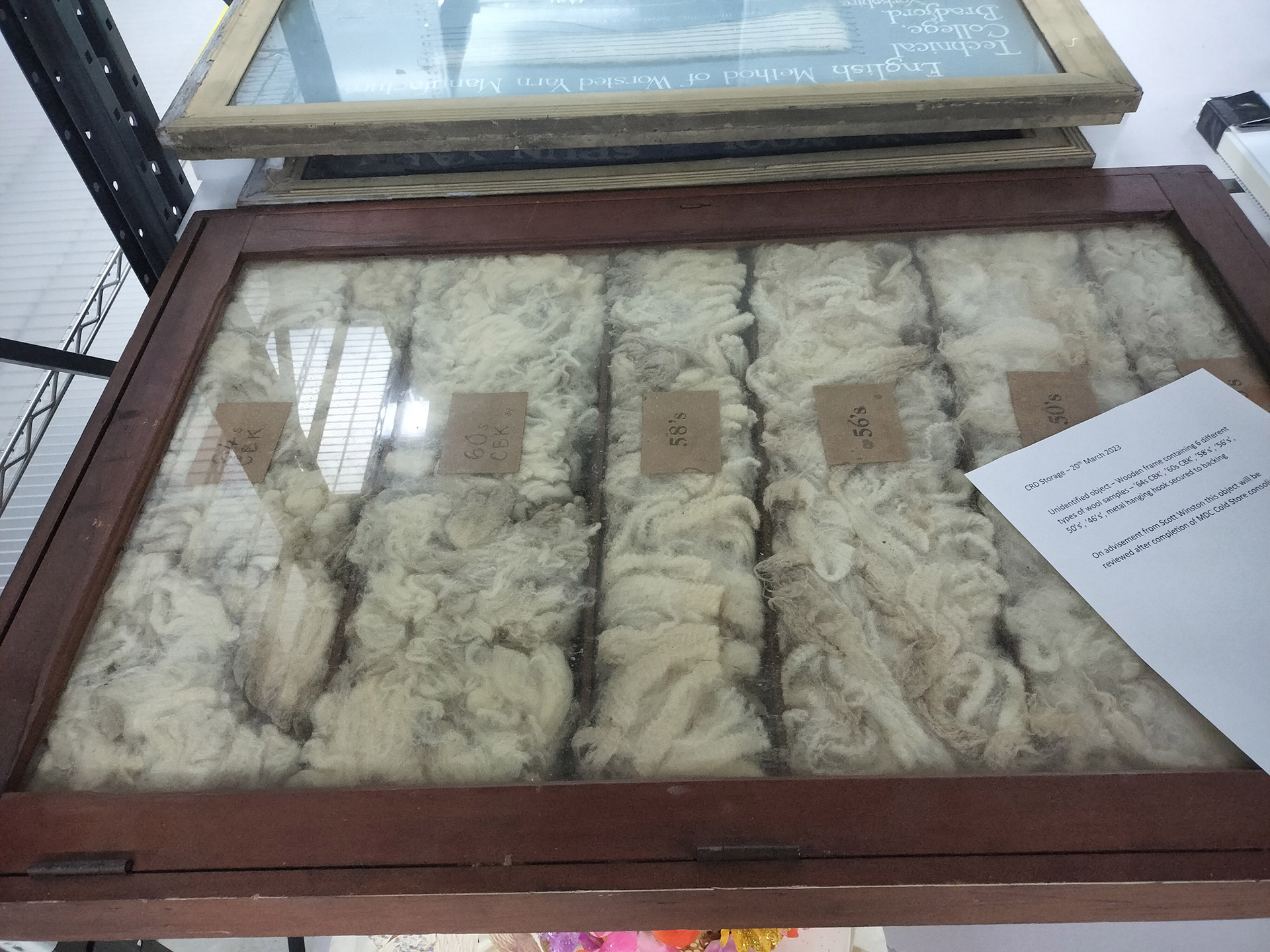
With permission from Powerhouse Museum
Photo: Handa Juri (National Center for Art Research)
Researching the wool industry at the Powerhouse Museum
Melanie Eastburn, senior curator at The Art Gallery of New South Wales, is participating in the exhibition as a collaborator. What are you learning from her?
Arai: When I first spoke with Melanie, I was surprised by the duration of the exhibition. When I asked her how long the museum's exhibitions generally run, she replied that the minimum is four months, but some exhibitions run for a year. At Japanese art museums, special exhibitions generally rotate every two to three months.
She said that one of the reasons that exhibitions run for so long is because SDGs (sustainable development goals) must be taken into consideration. Mounting an exhibition naturally generates a lot of waste. To avoid wasting resources, exhibitions run for a longer period of time, thus reducing waste. This would be hard be implement at Japanese museums, where it’s a given that folding screens, hanging scrolls, and other works made from fragile materials cannot be displayed for long periods of time.
So longer exhibition runs are connected to SDGs. That's not usually a big factor for run length in Japan.
Arai: In addition, hearing about her work makes it clear that museums are organized completely differently in Japan and Australia. Japanese art museums have small staffs, and each person is juggling tasks in multiple areas. For example, my current tasks include working on collections, special exhibitions, facility management, and IPM (integrated pest management).
While chatting with Melanie, I mentioned that I’m adding captions right up to the day of the exhibition, and she was shocked. For her, the curator's job on the first day of the exhibition is to deal with the press, so that should be top priority. Because the staff is large and the division of labor is well established, curators can concentrate on their primary duties.
These JUMP activities will continue for several years. How do you see yourself growing as a result?
Arai: This is my first experience working so intensively with an art museum overseas. If it weren't for JUMP, I might never have had this experience. I want to take in every aspect of the process, including any problems that arise.
It’s hard to come up with ideas for something that you’ve never experienced before. Thanks to the experience gained through JUMP, I should be able to consider tackling projects that I might have previously given up on because I thought that it would be too hard to work with a museum overseas. Eventually I’d like to be able to take the first step without hesitation, even if it is an international project.
July 10, 2025
Arai Yasuhiro
Curator, Shiga Museum of Art